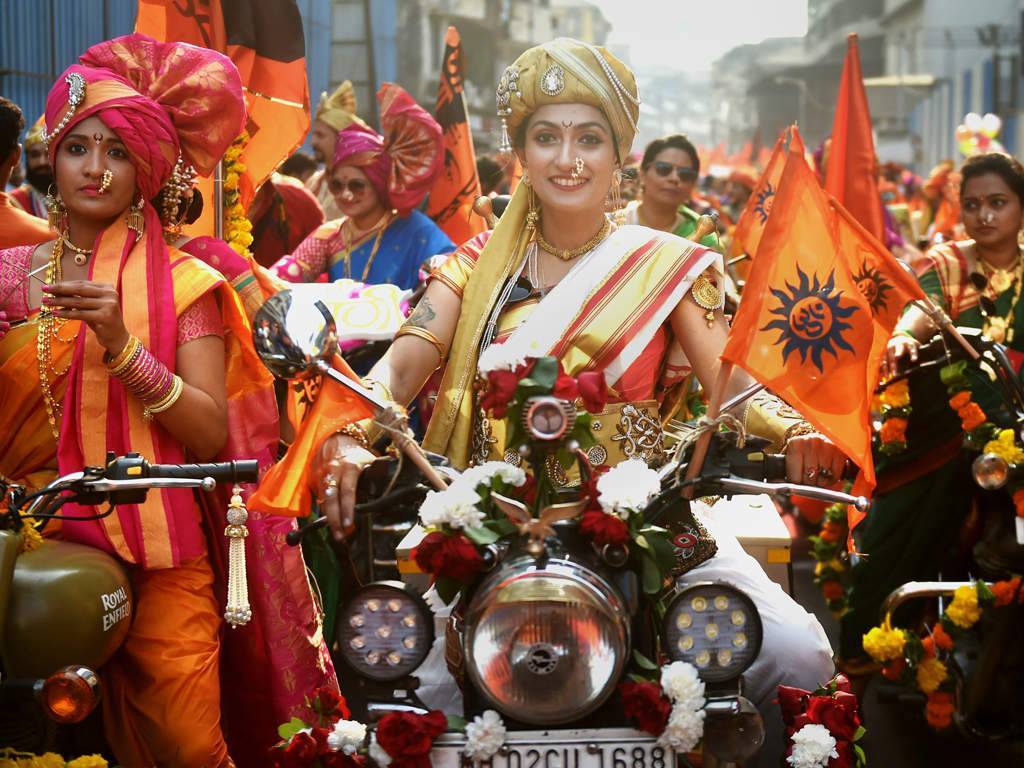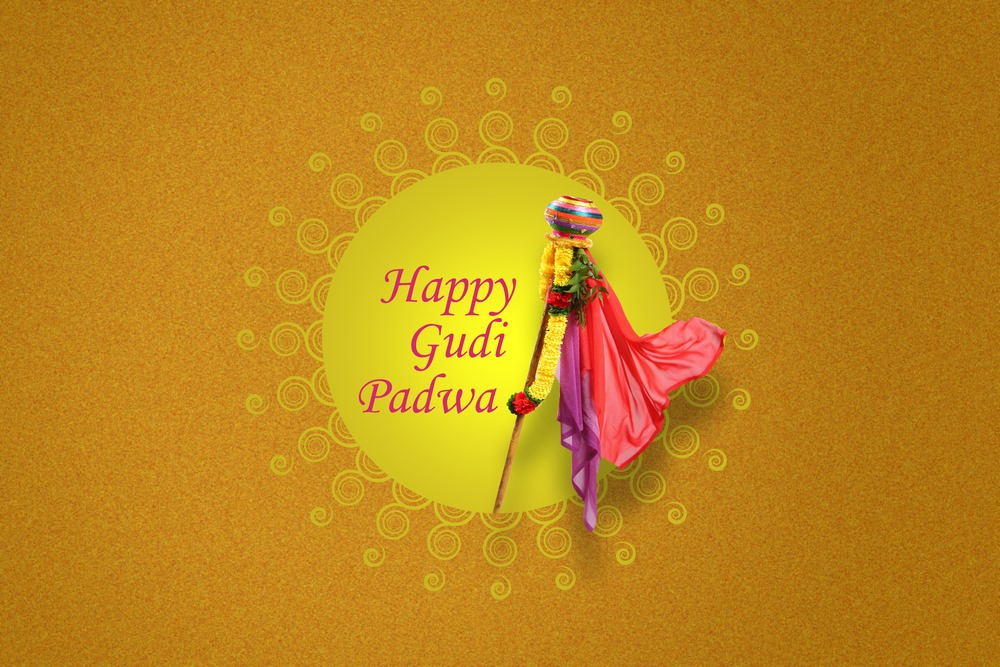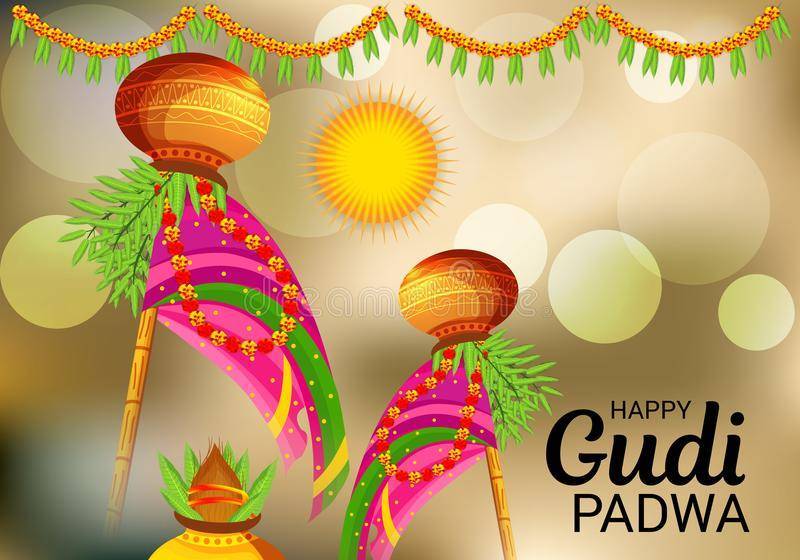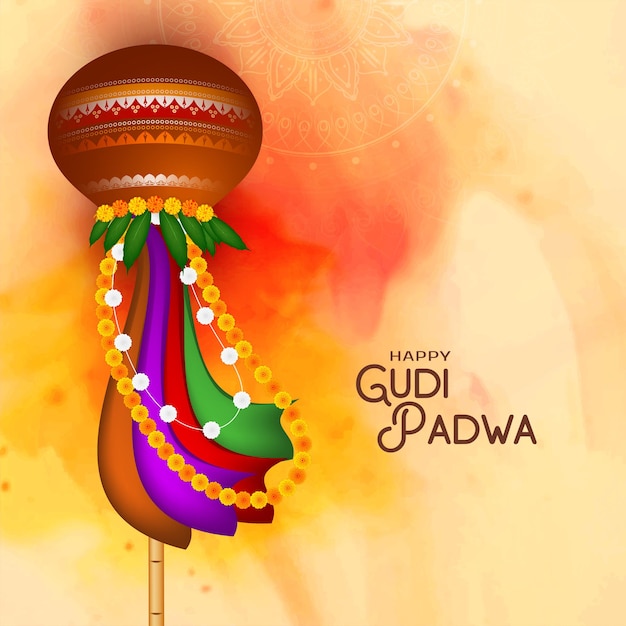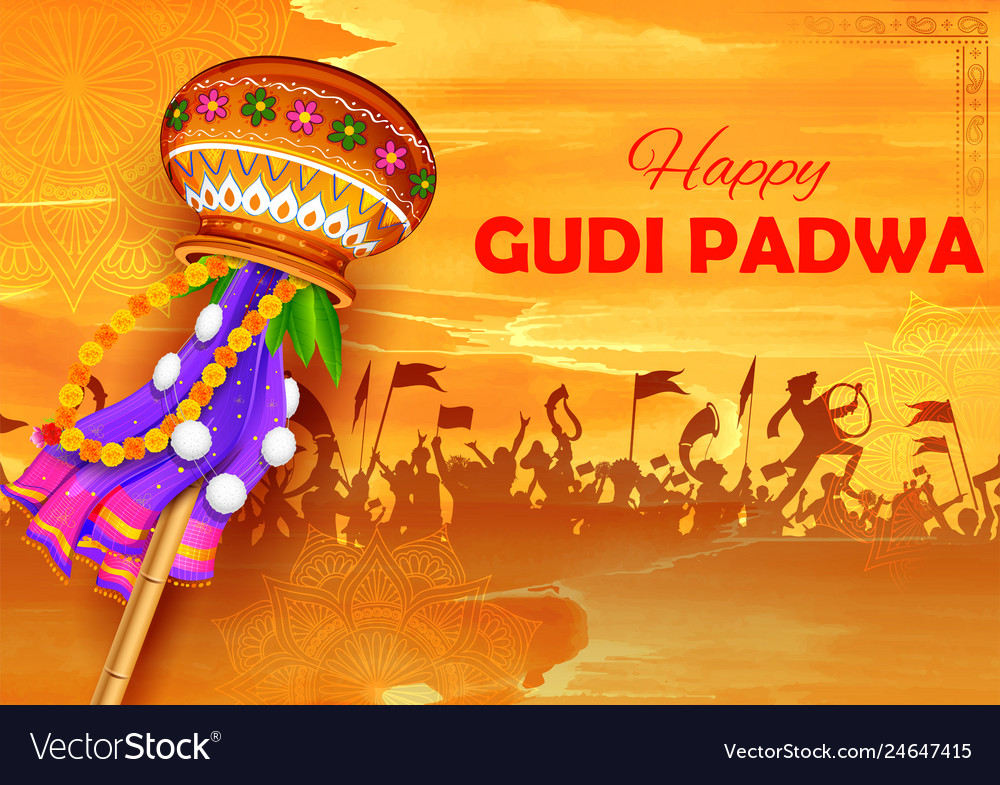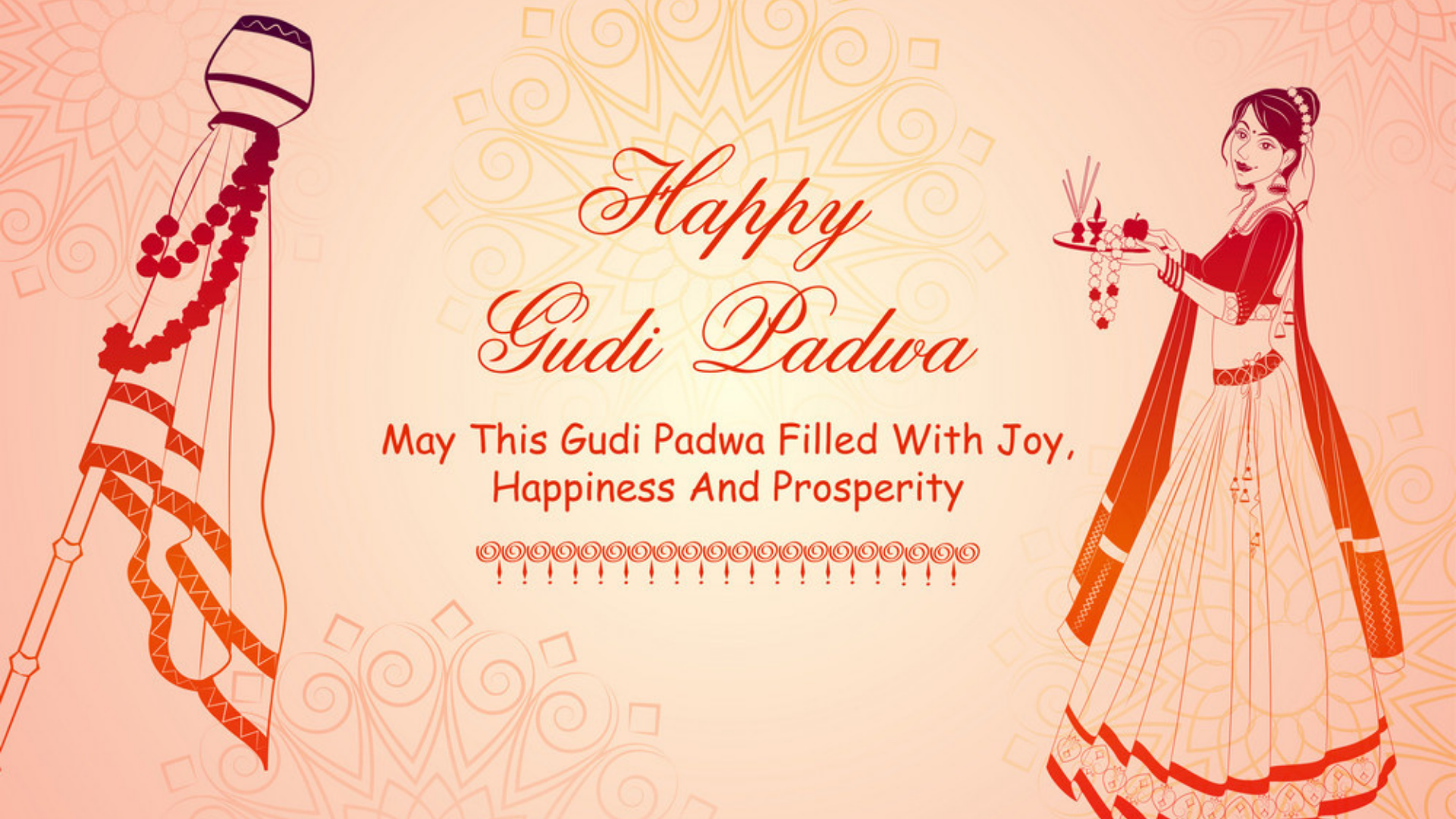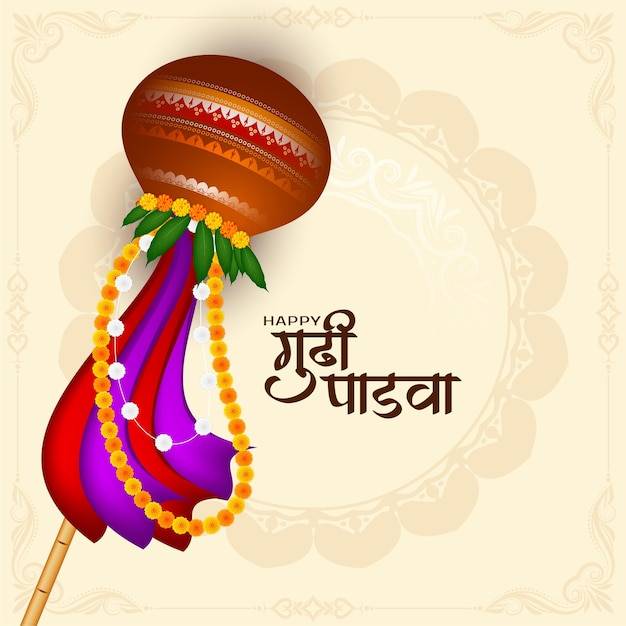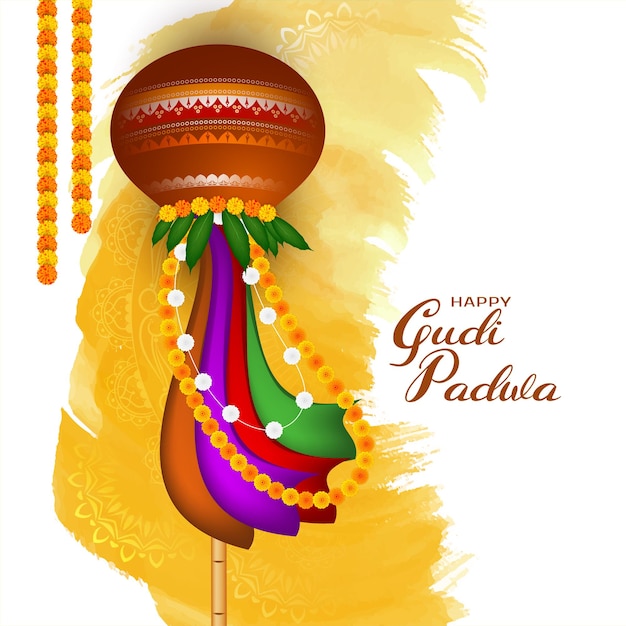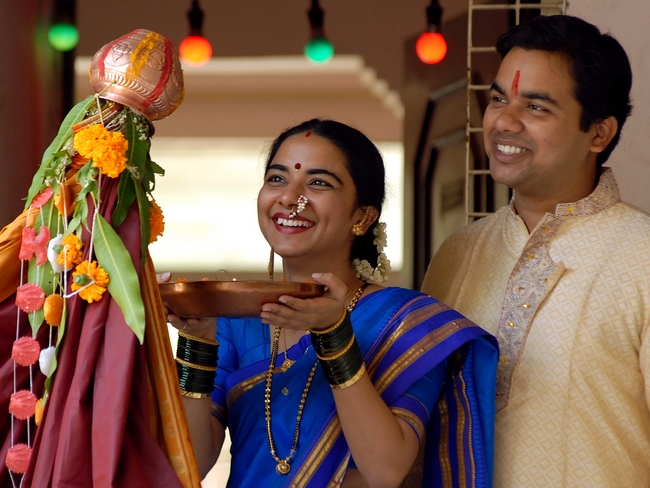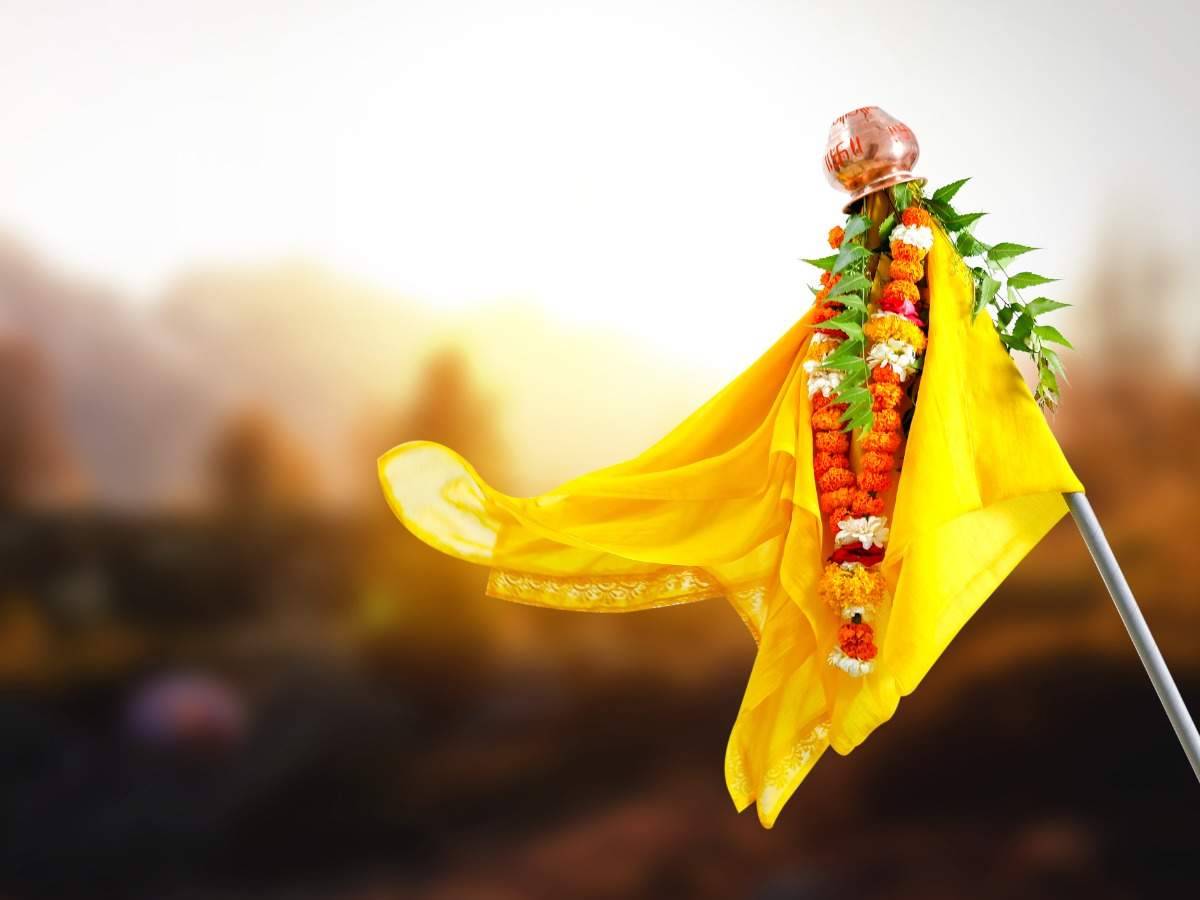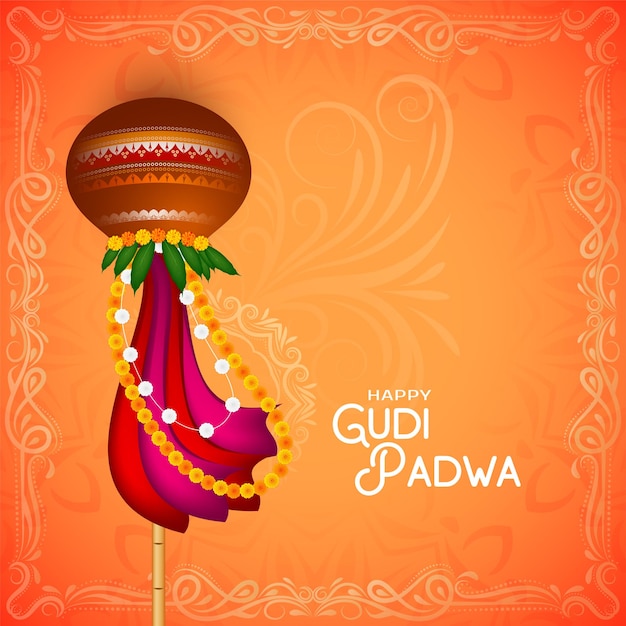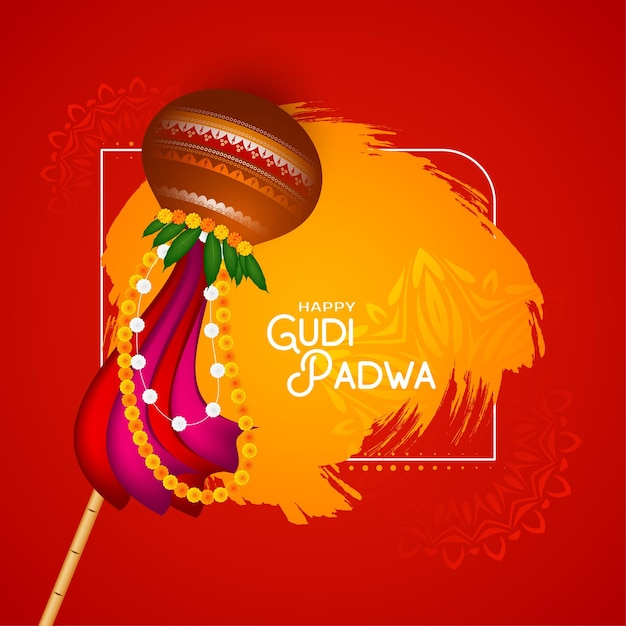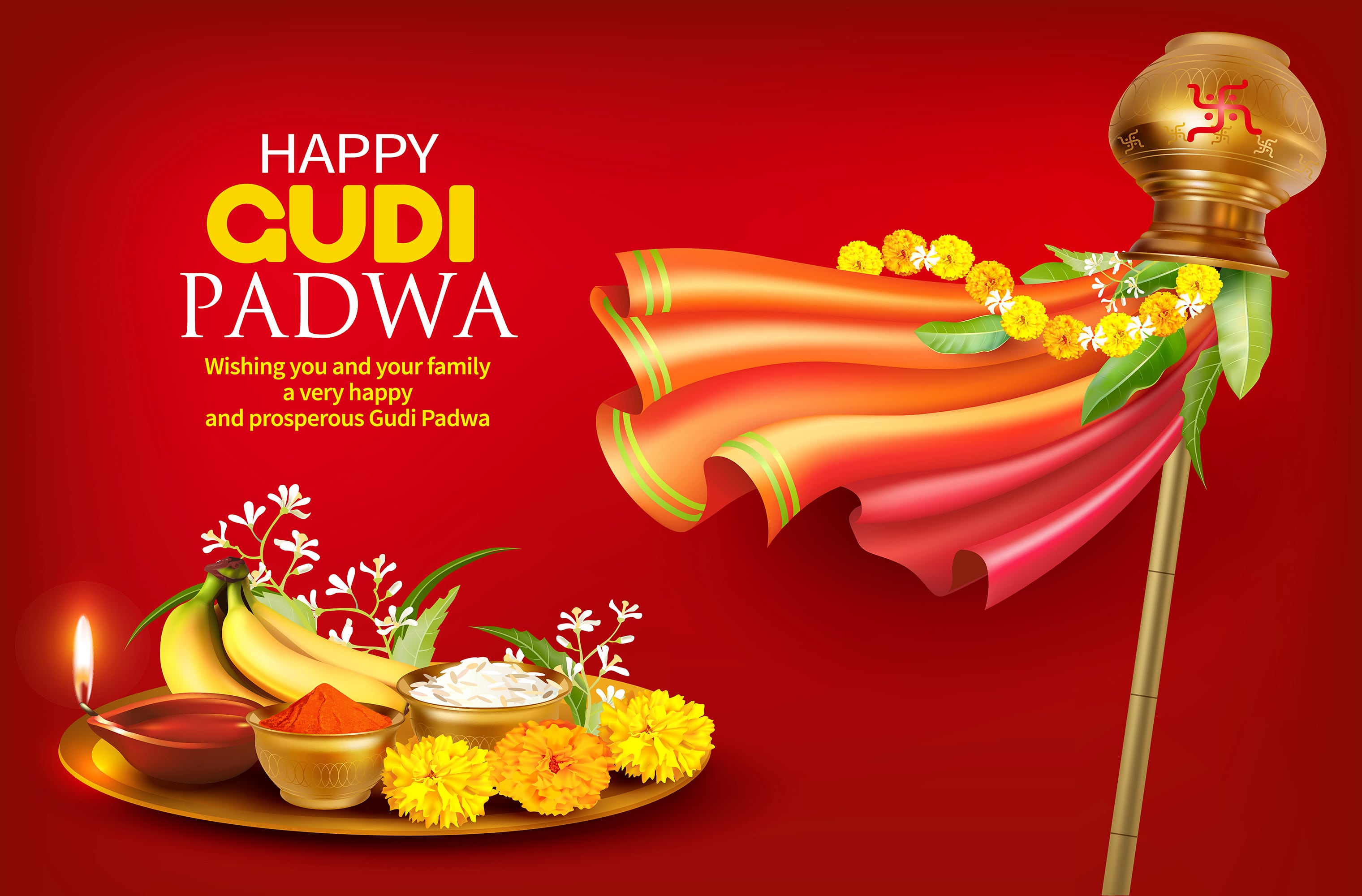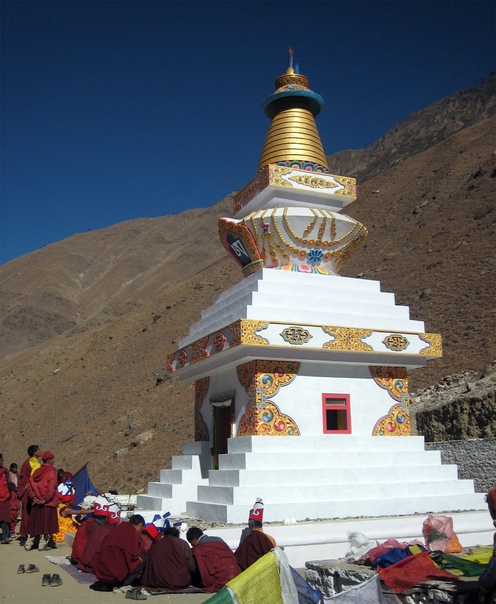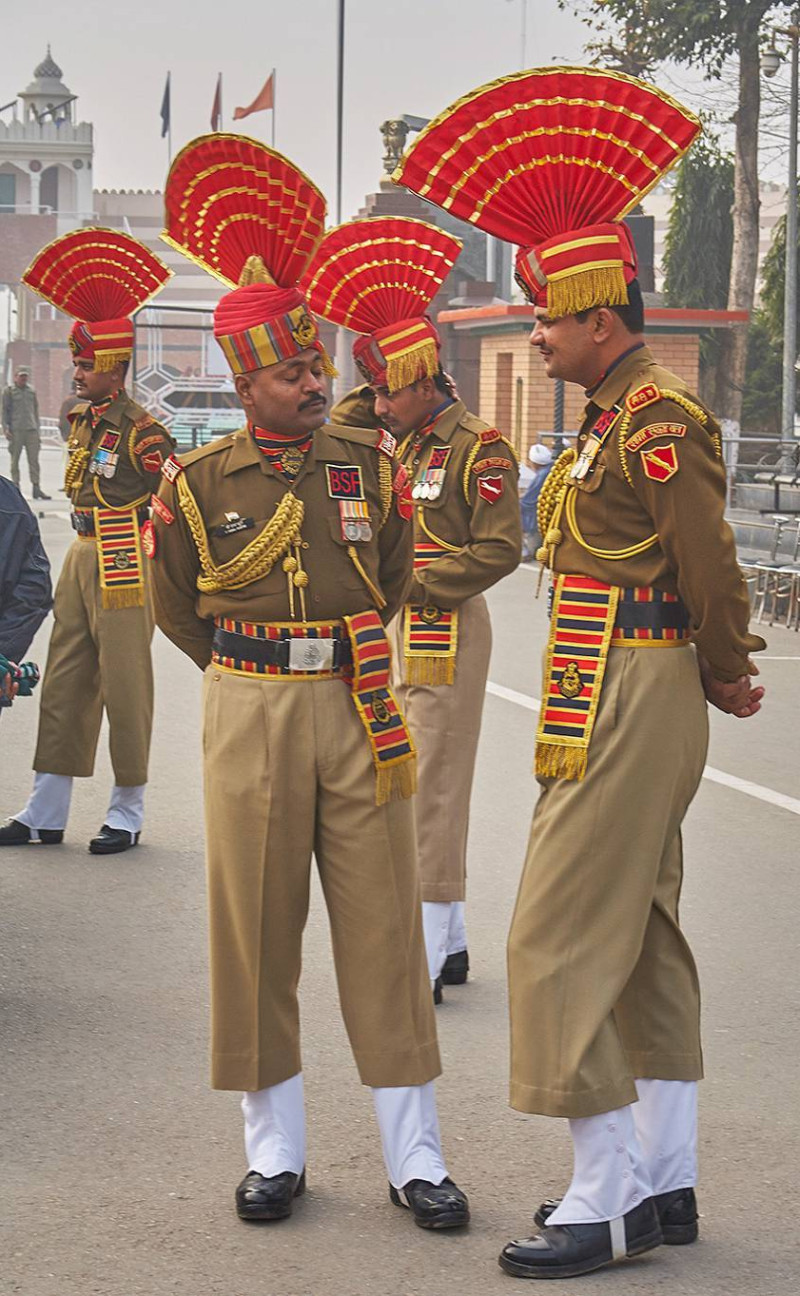Некоторые различия между Новым годом и Гуди Падва
Те из нас, кто посещает празднование Нового года, редко думают о духовных последствиях этого. Мы посещаем такие мероприятия, потому что это норма, и никогда не ставим под сомнение статус-кво.
Чтобы дать вам пищу для размышлений, группа духовных исследователей подготовила сравнительную таблицу между двумя типами празднований. Ниже приведены некоторые различия между двумя типами торжеств и их результирующее влияние на людей, участвующих в торжествах, из-за этих различий.
| Аспекты | Новогодний праздник НовыйгГод | Гуди Падва (празднуется в традиционной манере) |
|---|---|---|
| Время празднования | Полночь (и вся ночь) | Рассвет |
| Окружающая среда в это время года | Бесплодно и холодно (в северном полушарии) | Весна и начало сезона урожая |
| Соблазн покурить, выпить и принять наркотики | Высокий | Отсутствует |
| Одежда способствует | Увеличивает эго, сексуальное поведение, духовная уязвимость | Интроверсия и духовная чистота (сатвикта), духовная защита Пример: Ношение 6 ярдового и 9 ярдового сари. |
| Празднование внушает | Экстраверсию, сексуальные мысли | Духовную интроверсию, духовные эмоции, медитативное состояние |
| Ощущения на следующий день | Если праздновали с энтузиазмом, то на следующий день чуствовали себя истощенными и требовалось время на восстановление. | Участники чувствовали себя позитивнее физически, психически и духовно. На тонком плане, участники получили духовную энергию |
| Мысли о Духовности и духовном росте | Отсутствуют | Присутствуют |
| Более активный тонкий компонент во время празднования | Тама компонент: полночь – самое тамасик (духовно пагубное) время суток. | Саттва компонент: восход солнца одно из самых саттвик (духовно чистое) время суток. |
| Влияние негативной энергии | Максимально активное | Минимально активное |
| Влияние участия | Увеличивает риск оказаться под контролем негативной энергии1 | Уменьшает риск оказаться под контролем негативной энергией1 |
Примечания:
- Кроме того, если кто-то продолжает участвовать в таких вечеринках в течение года, риск негативного воздействия значительно возрастает. И наоборот, регулярное участие в таких духовныхой мероприятиях, как Гуди Падва, увеличивает позитивность и снижает риск подвергнуться нападению негативных энергий.
Подобно тому, как люди планируют вечеринки и мероприятия в канун Нового года, посредством духовных исследований было обнаружено, что негативные энергии также планируют канун Нового года, чтобы они могли максимально использовать людей для усиления своего контроля над обществом.
По данным Национального страхового бюро США по борьбе с преступностью, в праздничные дни отмечается самое большое количество угонов автомобилей за год. Главный преступник – Новый год, но канун Нового года также свидетельствует о росте краж автомобилей (nicb.org, 2018). Наблюдается всплеск других преступлений, таких как насилие в семье, хранение наркотиков, общественное опьянение, вождение в нетрезвом виде, насилие и т. д. Например, Бюро статистики и исследований Австралии в Новом Южном Уэльсе заявило, что количество домашних нападений, зарегистрированных полицией в день Нового года, является самым высоким за весь год (bocsar.nsw.gov.au, 2018).
Вышеупомянутые пункты позволяют рассмотреть два типа празднования Нового года. На самом деле, если немного глубже задуматься над этими пунктами, то появляется вопрос об абсурдности выбора этой произвольной даты и времени для празднования Нового года. Любое благоприятное празднование или событие в полночь неизменно подрывается негативными вибрациями окружающей среды. Еще одна тревожная тенденция заключается в том, что в настоящее время для молодого поколения стало нормой – вечеринки по ночам в танцевальных клубах каждые выходные. Они не понимают того, что пострадают от этого в большей степени, чем искатели-участники новогоднего эксперимента. Поскольку это происходит постоянно, шанс оправиться от негатива мало вероятен. Это приведет к пагубным долгосрочным последствиям на физическом, психологическом и духовном уровнях.
Gudi Padwa Special Products from Rudra Centre
Gudipadwa Puja Kit
We offer a kit specially prepared for Gudi Padwa festival. It contains all the essential items to prepare Gudi for decorating the entrance of house.
Gudi Padwa Puja:
Whether new home, new business or new beginning in life, Gudi Padwa Puja is a great and divine start-off to invite positivity, good health, auspiciousness into your life.
Ramayana Path:
It is best for warding off all the negative energies and for harmony in personal life. Get the blessings of Lord Ram and Hanumaanji with this puja.
Lakshmi Kuber Puja & Yagna
This puja breaks all the barriers that come your way of accumulating wealth and money. Get the blessings of Lakshmi and Kuber with this puja.
Rama Darbar Puja & Yajna
This puja is best for those seeking healthy, prosperity and relief from diseases. Get the blessings of Lord Rama, Goddess Sita, Lakshman ji and Hanuman ji.
Brahma Gayatri Puja & Yajna
A highly powerful Homa (Havan) for nullifying your bad karmas and gaining wisdom, intellect and material riches in life.
Puja for Starting New Business
A special Puja for new business ventures or start-ups. Start your venture with all auspiciousness and grace of Lakshmi.
Puja for Purchasing Asset
Complement your decision to invest in wealth with this special Puja for purchasing right assets at right tine.
When To Perform Gudi Padwa Rituals
Below given things can only be performed during the original Chaitra month:
• Nav Varsh Phal Shravan (listening to the New Year’s horoscope)
• Taila Abhyang (oil bath)
• Nimba Patra Prashan (eating Neem leaves)
• Dhwajaropan (flag hoisting)
• Navratrarambh (beginning of Chaitra Navratri)
• Ghatsthapana (establishing Kalash/holy stoup for Navratri Puja)
But, Nava Varsha Naamgrahan (naming ceremony of the New Year) during Sankalp must be done in Adhik Chaitra Shukla Pratipada only. The name of this Samvatsara is Nala 2080. It is also the Shri Shalivahan Shak 1945 and the name of this Samvat is Shobhakruth.
Gudi: Central Figure of the Festival
People raise Gudhi (Gudi) on the right side of their houses on the outside. It is made of a long wooden bamboo covered with an overturned copper pot called Kalasha and a brocade-filled yellow piece of cloth (green or saffron at times). Atop are the sugar crystals, neem leaves, and a twig of mango leaves with a garland of flowers is kept.
- Kalash means pot. In the revealed scriptures Kalash is called purnakalash. Purna means complete. So it is a complete pot with purity used for keeping holy waters or other ceremonial liquids
- Colours of the cloth used are generally yellow, green, or saffron. The yellow color represents sato guna. It symbolizes Agni the Fire God and Surya elements and kills tamasic energies or the darkness (ignorance). Green and saffron represent life, beginning as Lord Brahma had created the cosmos on this day and the fire element (divine) that leads the intense yellow (pure fire), respectively. A twig of Mango leaves represents immortality
- Red flowers used in the Gudi epitomize the qualities of passion against the negative elements. In the Vedas, all the aggressive deities such Goddess Kali signify red color that intimidates the survival of the evil spirits
- Sugar crystals: Panchamrit has Sugar as one of the ingredients. It represents sweetness. Being sweet, humble , and respectful is the first quality of people in the mode of goodness (Sato guna). In the entire Ramayana, Lord Rama never used harsh languages against any of His subjects including His enemies.
Гунхи [ править ]
Примечательным зрелищем во время Гудхи Падвы являются многочисленные Гудхи (или Гудхи ) в каждом доме. Это яркий разноцветный шелковый платок, похожий на ткань, перевязанный сверху длинным бамбуком. Сверху к нему прикреплены одна или несколько ветвей листьев нима и листьев манго вместе с гирляндой из цветов. Это устройство увенчано серебряным, бронзовым или медным горшком ( ханди или калаш ), символизирующим победу или достижение. Вся конструкция поднимается за пределами каждого дома, обычно справа, через окно или террасу. Это видно всем. Деревни или кварталы также объединяются и создают общину Гудхи Кавад., которые они вместе несут в местный храм Шивы.
Гудхи в Джамти Х. деревня Хинголи Талука, Махараштра
Некоторые храмы расположены на вершинах холмов, и группы работают вместе, чтобы помочь достичь кавад на вершину.
Некоторые из значений, приписываемых подъему Гудхи, следующие:
Фестиваль Гудхи Падва отмечает новый год, но также празднует победу воинов маратхов в процессиях.
- Он символизирует победу царя Шаливаханы и был поднят его людьми, когда он вернулся в Пайтан .
- Гудхи символизирует Брахмадхвадж (перевод: флаг Брахмы ), упомянутый в Брахма-пуране , потому что Господь Брахма создал вселенную в этот день. Он также может представлять Индрадхвадж (перевод: флаг Индры ).
- Исторически Гудхи символизирует победу и счастье Господа Рамы по возвращении в Айодхью после убийства Раваны. Так как символ победы всегда высоко держится, гудхи (флаг) тоже. Считается, что этот фестиваль отмечается в ознаменование коронации Рамы после его возвращения в Айодхью после завершения 14 лет изгнания.
- Считается, что Гудхи отгоняет зло, приглашает в дом процветание и удачу.
Праздничные деликатесы
В Гуди Падве праздничный праздник обычно начинается с особого вида чатни или пасты, приготовленной из листьев ниима, и кислого агента, такого как сырое манго или тамаринд, вместе с ягдой. Считается, что эта смесь очищает кровь и укрепляет иммунитет. Он также считается официальным началом праздника, в котором представлены такие местные деликатесы, как «Пуран Поли» – сладкие лепешки и знаменитое махараштское блюдо. Праздник также включает Shrikhand, сладкое блюдо из сухих фруктов и йогурта; Puris, жареные во фритюре лепешки и Aam Panna, напиток из сырого манго и специй.
Помимо празднования, махараштрине также считают Гуди Падву благоприятным днем и, таким образом, прекрасным поводом для начала нового предприятия, такого как открытие магазина или офиса, проведение пуджи или новоселья. В общем, это замечательный день для всей семьи, чтобы насладиться и поделиться вкусной едой со своими соседями, родственниками и друзьями!
Gudhipadwa Celebrations
1. In the morning, after doing the daily routine works like cleaning, bathing, etc., Gudi is hoisted.
– People clean their houses; and in villages, houses are plastered with fresh cow-dung.
– It is mentioned in the Shastras that Taila Abhyang must be done during the Arunodaya Kaal on this day.
– Gudi must be worshiped just after the sunrise. It must not be delayed.
2. Beautiful Rangoli designs are also made with bright colors and houses are decorated with fresh flowers.
3. People dress up in new, beautiful clothes. Usually, Marathi women adorn themselves in Kastha or Nauvari (9-yard Saree tucked at the back) and men wear Kurta Pajama along with a turban, which is mostly saffron or red.
4. Families gather and greet the New Year to everyone.
5. New Year’s horoscope must also be heard on this day.
6. Traditionally, the celebration begins after having the sweetened Neem leaves as Prasad. Usually, a paste is made with Neem leaves, jaggery, tamarind, etc. It is believed that this paste purifies the blood and increases immunity. Taste of this paste signifies the course of life as sweet, sour, and bitter.
7. Delicacies are cooked like Shrikhand, Puran Poli, Kheer (sweet porridge kind of dessert usually made with sweet potato, coconut milk, jaggery, rice flour, etc. by Marathis), and Sanna.
8. Later in the evening, Lezim is performed by the people.
Gudi Padwa Special Products from Rudra Centre
Gudipadwa Puja Kit
We offer a kit specially prepared for Gudi Padwa festival. It contains all the essential items to prepare Gudi for decorating the entrance of house.
Gudi Padwa Puja:
Whether new home, new business or new beginning in life, Gudi Padwa Puja is a great and divine start-off to invite positivity, good health, auspiciousness into your life.
Ramayana Path:
It is best for warding off all the negative energies and for harmony in personal life. Get the blessings of Lord Ram and Hanumaanji with this puja.
Lakshmi Kuber Puja & Yagna
This puja breaks all the barriers that come your way of accumulating wealth and money. Get the blessings of Lakshmi and Kuber with this puja.
Rama Darbar Puja & Yajna
This puja is best for those seeking healthy, prosperity and relief from diseases. Get the blessings of Lord Rama, Goddess Sita, Lakshman ji and Hanuman ji.
Brahma Gayatri Puja & Yajna
A highly powerful Homa (Havan) for nullifying your bad karmas and gaining wisdom, intellect and material riches in life.
Puja for Starting New Business
A special Puja for new business ventures or start-ups. Start your venture with all auspiciousness and grace of Lakshmi.
Puja for Purchasing Asset
Complement your decision to invest in wealth with this special Puja for purchasing right assets at right tine.
Духовноеый влияние празднования Гуди Падва в Центре духовных исследований и Ашраме в Гоа, Индия
В воздухе Центра духовных исследований и Ашрама царили покой и умиротворение, когда первый свет начал рассеивать тьму, подготавливая нас к очередному восходу солнца. Характерный звук коэля (птицы-кукушки) разносился по окрестным полям и лесам, когда солнце, как и в любой другой день, выглянуло из-за холмов.
Тем не менее, этот восход солнца был особенным.
Он ознаменовал начало Нового индуистского лунного года, широко известного как Гуди Падва. Этот праздник отмечают в разных частях Индии и он также ассоциируется с приходом весны. Когда первые лучи солнца пробились сквозь деревья и туман и достигли Центра исследований основанных на духовной науке и Ашрама, началось празднование Гуди Падва.
Обстановка выглядела очень празднично: искатели были одеты в красочные традиционные наряды, а дверной проем украшали гирлянды цветов. Наряду с празднествами, искатели, присутствовавшие на торжествах, говорили, что они могли легко воспринимать повышенный уровень Божественного сознания (Чайтанья) и духовные исцеляющие вибрации вокруг них. Звуки санскритских мантр наполняли воздух, а аромат зажженных ароматических палочек витал вокруг; трудно было не почувствовать святость церемонии. Оглядываясь вокруг, можно было увидеть некоторых искателей в медитативном состоянии, а других в состоянии, когда их духовные эмоции начали пробуждаться.
1.1. Последующий новогодний эксперимент – предпосылки и цель
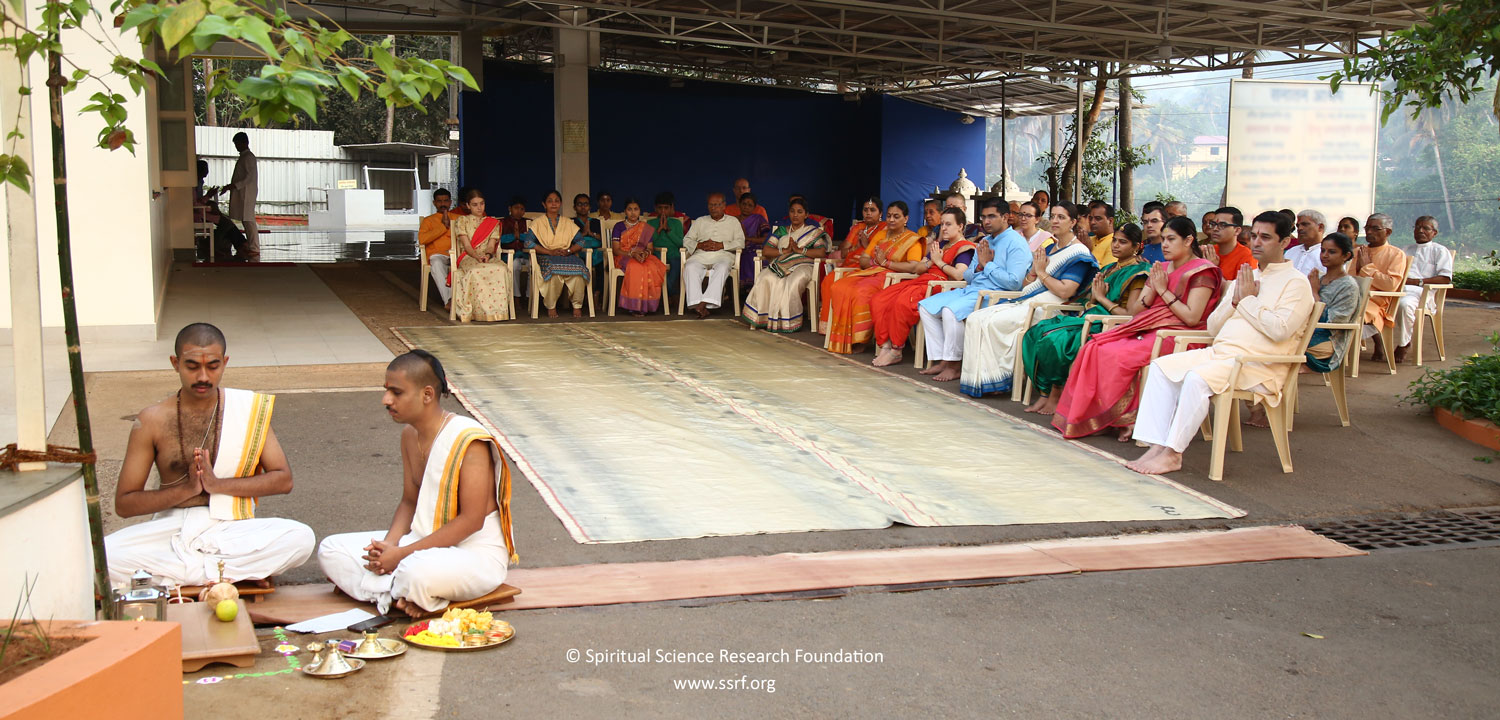
Среди искателей, присутствующих на Гуди Падва была группа искателей, принявших участие в праздновании Нового Года 31 декабря 2018 — 1 января 2019. Это было сделано в рамках исследований тонкого влияния празднования обычного Нового Года. SSRF ранее опубликовал результаты, касающиеся духовного влияния празднования Нового года.
Поскольку то, как традиционно празднуется Гуди Падва, резко контрастирует с тем, как празднуется Новый год, группе духовных исследователей было любопытно узнать разницу в их духовном воздействии. Соответственно, SSRF и Махарши Адиятма Вишвавидялай (MAV) провели последующее исследование, посвященное тонкому влиянию традиционного празднования Гуди Падвы, результаты приведены ниже.
All About Gudi Padwa Festival
This festival is celebrated with great excitement and elation by the people living in the Konkan and Maharashtra regions of our country. It is an extremely important festival for them. This festival marks the arrival of the spring season. After the cold wintery months in the country, this festival heralds the arrival of Basant, or spring as it is referred to in Hindi.
This festival also signals the farmers to harvest the crops, initiating a new agricultural cycle. Once the Rabi crop of the season is harvested, the farmers sell it in the market to earn their livelihood. As a result, this festival also stands for prosperity and abundance. Apart from this, the name of the festival is an amalgamation of two words, “gudi” and “padwa,” where “gudi” means the emblem or flag of Lord Brahma and “padwa” means the first day in the lunar cycle. Gudi Padwa 2023 will be celebrated on the 22nd of March with ceremony and grandeur.
Gudi Padwa Significance
This major festival holds a lot of significance as a spring festival. It is also a harvest season festival that is celebrated with renewed vigor every year. This festival, however, holds so much importance because it marks the arrival of the New Year as per the Hindu calendar or panchang. It is for this specific reason that this festival holds such great import for the Marathi as well the Konkani folks.
After reaping the crops of the Rabi season, farmers get ready to welcome the spring season with hearts filled with hope and aspirations. However, according to Hindu mythology, this festival also holds great significance because it was on this day that the creator or the Hindu god Brahma created the universe. It is from this day onwards that the concept of time came into being, according to the scriptures. Furthermore, this mythical day is also celebrated to commemorate the crowing of Bhagwan Shree Ram as the rightful king of Ayodhya upon his return from the exile. It, therefore, marks the victory of good over the wicked and the immoral.
Байсаки
В индийском штате Пенджаб 13 или 14 апреля отмечают Байсаки, один из самых любимых сикхских праздников. Это одновременно и праздник урожая, и новогодний день,
и религиозный праздник равенства, когда последний сикхский гуру провозгласил, что все люди братья, таким образом, устранив различия между кастами.
По поверьям индусов, в этот день несколько тысяч лет назад богиня Ганга спустилась на Землю, поэтому в Байсаки многие из них вместе собираются на ритуальные купания у берегов священной реки Ганг.
В этот день пенджабцы просыпаются ранним утром и посещают храмы с цветами в руках. Они принимают участие в специальных религиозных мероприятиях. После посещения храма верующие едят кара прасад — специальное блюдо из сладкой муки и масла.
В течение всего дня праздничные процессии движутся по улицам. Тысячи людей принимают участие в торжественных шествиях, поют религиозные песни, танцуют, идут с флагами и цветами, барабанщики выбивают марши. Мужчины размахивают мечами, а некоторые из них едут на красиво украшенных лошадях. Все поздравляют друг друга и желают счастья.
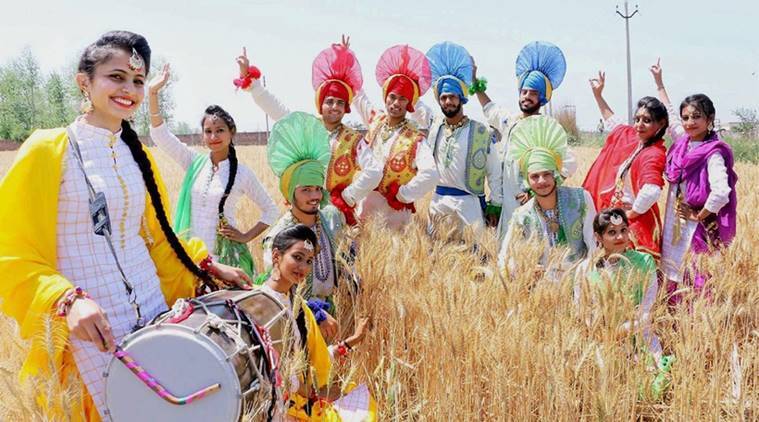
Пенджабские фермеры несколько по-другому отмечают Байсаки. В этот день они готовят национальные блюда, устраивают многолюдные ярмарки и концерты, наряжаются в новую одежду, поздравляют друг друга с Новым годом. В поле собирается большое количество людей, проводятся народные танцы гидха и бхангра, посвященные празднику урожая.
Эти удивительные танцы выражают всю историю сельскохозяйственного процесса, начиная от посева и пахоты и заканчивая сбором урожая. Мужчины наряжа-ются в белые рубашки, яркие жилетки, цветные тюрбаны, подобие
юбок и исполняют танец бхангра. Они совершают замысловатые движения под звуки дхола — национальных барабанов.
Танец гидха исполняют женщины. Они надевают много блестящих украшений, издающих приятный звон при каждом движении, и красочные наряды. Шумные торжества идут до позднего вечера.
Байсаки, приносящий радость и веселье, еще долго останется в памяти пенджабцев, с нетерпением ожидающих следующего Нового года.

этимология
Гудхи означает флаг, водружают флаги на домах в рамках празднования в Махараштре, где его в основном отмечают. Согласно Киттелю, слово принадлежит южноиндийскому языковому происхождению. Слово pāḍavā происходит от санскритского слова pratipad, обозначающего первый день каждых двух недель лунного месяца, то есть первый день появления луны после так называемого дня «новолуния» ( amāvāsya ) и первый день после полнолуния. По этому случаю также поднимается Гудхи , давший этому фестивалю название. Термин падва или падаво также связан с балипратипадом, третьим днем Дивали это еще один праздник, который наступает в конце сезона сбора урожая.
Gudipadwa Muhurat
1. The Samvatsara begins on the day when Pratipada (first day of a fortnight; also known as “Padva”) is prevailing during the sunrise.
2. If Pratipada is prevailing on the sunrises of 2 days, the first day is considered for the celebration.
3. If Pratipada is not prevailing during the sunrise of any day, Nav Varsh will be celebrated on the day when Pratipada is beginning and ending.
In case of Adhik Maas (extra month added after every 32 months, 16 days, and 8 Ghatis), below given rules will be followed:
If it is Chaitra Adhik Maas (the extra month), Nav Samvatsara will begin from its Pratipada only. It is because Adhik Maas is the part of its original month only. Hence, along with the original Chaitra month, Adhika Chaitra is also considered the part of the New Year.
WHY GUDI PADWA IS CELEBRATED?
Every cultural festival of India has a reason behind its celebration. The entire celebration of Gudi Padva revolves around three major reasons. First, it is believed that Lord Brahma created the cosmic universe on this day. Second, Lord Rama returned to Ayodhya after the war against Ravana. And third, it underlines the beginning of Spring or Vasant Ritu as the sun planet is above the intersecting point of Equator. Another significant reason for celebrating Gudi Padwa is that it marks the harvest /reaping of Rabi crops. As India is chiefly an agricultural country, this is an important sign of Gudi Padwa. In Maharashtra, locals celebrate by honoring Shivaji Maharaja and his victory over the Mughal dominance in the region. It is believed that the Gudi which is raised on the day in Maharashtrian Hindu homes is also to honor his victory.
Story of Gudi Padwa
The story of Lord Brahma has special importance for Gudi Padwa. The Puranas narrate that the Universe was completely wiped out by an enormous deluge. Even the cycle of time stopped. Lord Brahma recreated the Universe and re-initiated time to start once again, on the day that Gudi Padwa is celebrated. This is the reason why the Gudi is also called ‘Brahma Dhwaja’ and raised to commemorate this event. On this day Lord Brahma, the Creator, is worshipped too.
Подъем Гуди
Это главное событие праздника Гуди Падва. Гуди состоит из длинного бамбукового шеста, покрытого яркой парчовой тканью, увенчанной перевернутым медным или латунным горшком. В некоторых случаях листья кокоса и / или манго помещаются под горшок. Вокруг этой композиции завязана гирлянда цветов, на которую нанесены куркума и сандаловые пасты. Гуди поднимается справа от главного входа в дом, чтобы его было видно. Затем семья поклоняется Гуди и молится за Новый год, чтобы принести процветание, здоровье и счастье в их дома. Ранголи рисуют на полу перед Гуди, как правило, женщины из дома. Гуди указывает на флаг победы, а также, как полагают, отгоняет зло и приносит удачу всем членам семьи.
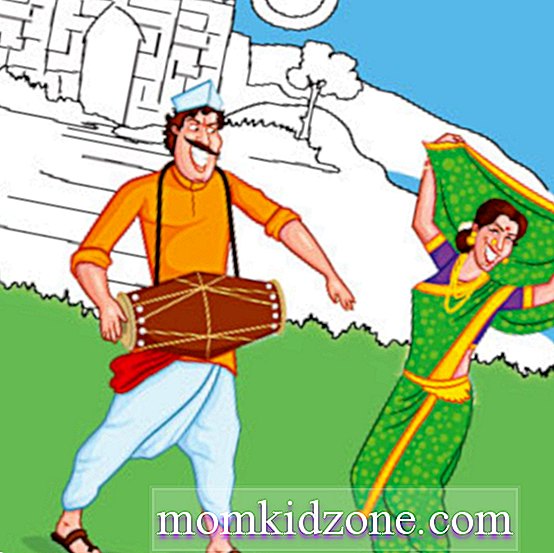
WHAT IS GUDI PADWA OR UGADI AND WHY DO WE CELEBRATE GUDI PADWA?
Gudi Padwa is the most important festival for the state of Maharashtra and Konkan region i.e. Goa of India where it is referred to as Saṁsāra Pāḍavo. Considered a significant traditional festival, it is celebrated as the New Year by Maharashtrian Hindus. Gudi Padva/Padwa is celebrated in different states and regions of our country in different styles or with a different set of rituals and is known by various names. This day is celebrated as the Ugadi festival in Telangana, Andhra Pradesh, and Karnataka. It is called “Ugadi” in Telugu and “Yugadi” in Kannada. Padwa originates from the word ‘Paddava’ which means the foremost day or the first day and refers to the waxing Moon and ‘Gudi’ is the symbolical flag which is raised which explains the Gudi Padwa meaning. Gudi Padwa is celebrated on the first day of the Chaitra month (as per the lunisolar Hindu calendar), which coincides with the first day of Shukla Paksha (first day after New Moon) which falls in March-April. The mood in and around the state of Maharashtra changes to a happy, joyous celebratory mode on this day that includes traditional rituals too. Families enthusiastically decorate their houses to welcome the New Year in anticipation of an excellent year ahead, vibrant coloured clothes are worn and the infectious mood translates to smiling faces everywhere on this day of the Gudi Padwa festival.
When is Gudi Padwa?
Gudi Padwa or Parva is going to be celebrated on Saturday, 2 April, 2022. Prtipada Tithi Begins – 11:53 AM on Apr 01, 2022 Prtipada Tithi Ends – 11:58 AM on Apr 02, 2022
Scroll Down to read moreShop Now for Energized Products
INR 415 | USD 5.31
Product Code : YP19
INR 1,025 | USD 13.12
Product Code : LB10
INR 1,100 | USD 14.08
Product Code : DSY01
INR 350 | USD 4.48
Product Code : AC01
INR 1,50,000 | USD 1,920.00
Product Code : RJC20AD
INR 9,501 | USD 121.61
Product Code : PY115
INR 6,135 | USD 78.53
Product Code : NSB07
INR 25,200 | USD 322.56
Product Code : RLG01
INR 9,501 | USD 121.61
Product Code : PY260
INR 280 | USD 3.58
Product Code : RCL01
INR 1,450 | USD 18.56
Product Code : SR122
INR 17,600 | USD 225.28
Product Code : SMC04
INR 68,410 | USD 875.65
Product Code : MIC09
INR 0 | USD 0.00
Product Code : CBN20
INR 2,675 | USD 34.24
Product Code : GPY14
INR 2,500 | USD 32.00
Product Code : YSF18
INR 6,500 | USD 83.20
Product Code : MRY02
INR 2,000 | USD 25.60
Product Code : MY20
INR 11,450 | USD 146.56
Product Code : OLG13
INR 1,02,600 | USD 1,313.28
Product Code : ABK01
Astrological Significance of Gudi Padva
Astrologically as well, this festival holds a lot of significance because not only is it the beginning of the New Year, offering a fresh start to things and people alike. At the same time, this event occurs during the Sadhe Teen muhurta, which is deemed to be a really auspicious time. As per the astrological calculations, any task that is initiated during this period is bound to see the heights of success.
Legends Associated with the Festival of Gudi Padwa
As per the legends associated with this day, the brave Maratha king Chatrapati Shivaji Maharaj hurled the flag of victory in his kingdom after defeating the Mughals. After this, he re-started the festivities associated with the festival of happy Gudi Padwa. Hence, this festival is celebrated with even greater vigor in Maharashtra. The festival has since then become a symbol of prosperity and victory.
Furthermore, it is on this day that Gautami Putra, Satakarni of the famous Shalivahan dynasty, defeated the Sakas in battle in 78 A.D. It is for this reason that this festival is also the primary day of the Shalivahan calendar.
To put it simply, this day of Gudi Padwa in Marathi is a very important occasion for all the people of the state. It is celebrated with special dance performances, bhajans, skits, and aartis. It brings the people together and unites them in harmony with each other.
If you have any questions regarding Gudi Padwa 2023, then Astroyogi astrologers can be of great help!
Author :
Team Astroyogi
1
Likes
Dislike
Share
1 Views
Guḍhī Pāḍavā на других языках, государствах и людях [ править ]
Этот фестиваль, известный в Махараштре как Гунхи Панава («Гудхи Паадава») , также известен как
- Samvatsar Padvo среди индусской Konkanis из Гоа и Конкани диаспоры в Керале
- Югади среди остальной конкани диаспоры в Карнатаке и Угади в штате Андхра-Прадеш Телангана и Наврех среди кашмирских пандитов
В других частях Индии этот фестиваль отмечается во время
- Угади в штате Андхра-Прадеш и Телангана
- Югади в Карнатаке
- Чети Чанд среди синдхов
Он также отмечается в северо-восточном штате Манипур как Саджибу Нонгма Панба Чейраоба, а также в таких странах, как Непал, Бирма, Камбоджа и других странах, где проживает много индуистов. В этот день люди готовят самые разные блюда и блюда, а вечером поднимаются на холмы.
В Кашмире община кашмирских индусов или пандитов, а также община кашмирских сикхов празднуют этот фестиваль как Наврех, начало Нового лунного года. Большой тхал, а именно латунная тарелка для еды, наполнен сырым рисом и помещен в него новый Пунчанг, Кашмирские индуистские эфемериды. Немного вареного риса, творога, соли, все в маленьких чашках, хрустящая денежная купюра и монета, ручка, несколько цветов, золотой браслет, серебряное украшение, 3 или 5 грецких орехов также помещаются в этот Тал. Ожидается, что каждый увидит этот тхал первым делом с утра. Обычно старшая хозяйка в доме видит его первой, а затем приносит, чтобы показать всем спящим членам семьи. Ожидается, что все будут одеты в новую одежду, а детям дадут немного денег, чтобы они могли насладиться фестивалем. Обед – это праздник.
В Пенджабе новый год празднуется как Байсаки, выпадающий в основном на 13 или 14 апреля, в первый день месяца Найсах Бикрам Самавт или календаря.
в Бенгалии это событие отмечается как Наба Барша, в Ассаме как Биху, в Керале как Вишу, в Тамил Наду как Путуханду. Считается самым благоприятным днем в году.
Этимология [ править ]
| В этом разделе не процитировать любые источники . Пожалуйста, помогите улучшить этот раздел , добавив цитаты из надежных источников . Материал, не полученный от источника, может быть оспорен и удален . ( Март 2018 г. ) ( Узнайте, как и когда удалить этот шаблон сообщения ) |
Традиционный гудхи
Гудхи означает флаг, установить флаг на домах как часть празднования в Махараштре, где его в основном отмечают. По словам Киттеля, слово принадлежит южноиндийскому языку происхождения.
Слово pāavā происходит от санскритского слова pratipad, обозначающего первый день каждых двух недель лунного месяца, то есть первый день появления луны после так называемого дня «новолуния» ( amāvāsya ) и первый день после полнолуния. Луна. По этому случаю также поднимается Гудхи, давший этому фестивалю название. Термин падва или падаво также связан с балипратипадом – третьим днем Дивали [ необходима цитата ], который является еще одним праздником, который наступает в конце сезона сбора урожая.
HOW IS GUDI PADWA CELEBRATED? / WHAT TO DO ON GUDI PADWA?
Gudi Padwa is about new beginnings. The preparation for Gudi Padwa celebrations starts days ahead when houses are thoroughly cleaned like it is done before the festival of Diwali. Like every year, Gudi Padwa 2023 will be a public holiday in Maharashtra. On the day of Gudi Padwa after having the traditional bath, the day starts with the ritual of having a paste of Neem leaves, Jaggery, and Tamarind as it purifies the blood and regulates its circulation. Another version of this paste also has Corriander seeds. Unlike other Indian festivals where having sweets is prevalent, Gudi Padwa festival celebrations include this unique ritual of having this bitter-sweet-sour mixture which in one way represents the way life tastes.The women of the house create beautiful multi-hued Rangolis outside the house and on the staircase leading to the house. This tradition holds huge significance and is an integral part of the celebrations. The Rangoli designs include the symbols of Swastik, Om, and other auspicious symbols. Coloured powder and sometimes flower petals are used for the Rangoli displays. Rangoli is said to invite prosperity and abundance into the house. Torans with a combination of Mango leaves and flowers are hung above the main entrance door. All family members wear new clothes. Women wear Gold jewelry as Gold is a symbol of prosperity and also prefers wearing the traditional Maharashtrian Nauvari saree on Gudi Padwa. Special dishes like Shrikhand-Poori, Puran Poli are made fresh for Gudi Padwa and are offered to God and the Gudi as well. The most important ritual of hoisting the Gudi is done by the family members with fervor. Traditionally the Gudi is raised by a senior member of the family. It is a day of bonding and togetherness with friends and relatives. Meeting friends, exchanging gifts with each other, and having meals/sweets together is the order of the day. The doors of the house are kept wide open to welcome all guests.In cities and towns of Maharashtra, processions of men and women with flags in their hand, dressed in colorful traditional attire dancing and singing about the valor of Chattrapati Shivaji Maharaj is a common sight. The traditional Maharashtrian dance Lezim is often seen being performed in these processions with the accompaniments of traditional drums and Bugal of Maharashtra.As Rangoli is an important part of Gudi Padwa, Rangoli displays are seen on the streets too. Rangoli competitions are organized in many areas of cities that have enthusiastic participation. The tradition of buying Gold, new houses, vehicles, the inauguration of new businesses/shops is prevalent. Because the day is highly auspicious so it is considered anything new started on this day will be blessed to reap abundance. The auspicious occasion of Gudi Padwa 2023 is eagerly awaited by everyone who celebrates it. It is a day when deities are invoked for blessings, the Gudi is raised to ward off evil and everyone is prepared to relax, indulge, and enjoy this day. These are some of the widely followed Gudi Padwa rituals.
Gudi Padwa Special Products from Rudra Centre
Gudipadwa Puja Kit
We offer a kit specially prepared for Gudi Padwa festival. It contains all the essential items to prepare Gudi for decorating the entrance of house.
Gudi Padwa Puja:
Whether new home, new business or new beginning in life, Gudi Padwa Puja is a great and divine start-off to invite positivity, good health, auspiciousness into your life.
Ramayana Path:
It is best for warding off all the negative energies and for harmony in personal life. Get the blessings of Lord Ram and Hanumaanji with this puja.
Lakshmi Kuber Puja & Yagna
This puja breaks all the barriers that come your way of accumulating wealth and money. Get the blessings of Lakshmi and Kuber with this puja.
Rama Darbar Puja & Yajna
This puja is best for those seeking healthy, prosperity and relief from diseases. Get the blessings of Lord Rama, Goddess Sita, Lakshman ji and Hanuman ji.
Brahma Gayatri Puja & Yajna
A highly powerful Homa (Havan) for nullifying your bad karmas and gaining wisdom, intellect and material riches in life.
Puja for Starting New Business
A special Puja for new business ventures or start-ups. Start your venture with all auspiciousness and grace of Lakshmi.
Puja for Purchasing Asset
Complement your decision to invest in wealth with this special Puja for purchasing right assets at right tine.
GUDI: CENTRAL FIGURE OF THE FESTIVAL
People raise Gudhi (Gudi) on the right side of their houses on the outside. It is made of a long wooden bamboo covered with an overturned copper pot called Kalasha and a brocade-filled yellow piece of cloth (green or saffron at times). Atop are the sugar crystals, neem leaves, and a twig of mango leaves with a garland of flowers is kept.
- Kalash means pot. In the revealed scriptures Kalash is called purnakalash. Purna means complete. So it is a complete pot with purity used for keeping holy waters or other ceremonial liquids
- Colours of the cloth used are generally yellow, green, or saffron. The yellow color represents sato guna. It symbolizes Agni the Fire God and Surya elements and kills tamasic energies or the darkness (ignorance). Green and saffron represent life, beginning as Lord Brahma had created the cosmos on this day and the fire element (divine) that leads the intense yellow (pure fire), respectively. A twig of Mango leaves represents immortality
- Red flowers used in the Gudi epitomize the qualities of passion against the negative elements. In the Vedas, all the aggressive deities such Goddess Kali signify red color that intimidates the survival of the evil spirits
- Sugar crystals: Panchamrit has Sugar as one of the ingredients. It represents sweetness. Being sweet, humble , and respectful is the first quality of people in the mode of goodness (Sato guna). In the entire Ramayana, Lord Rama never used harsh languages against any of His subjects including His enemies.
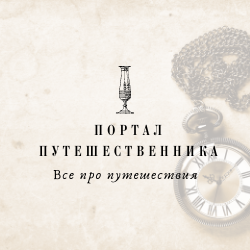




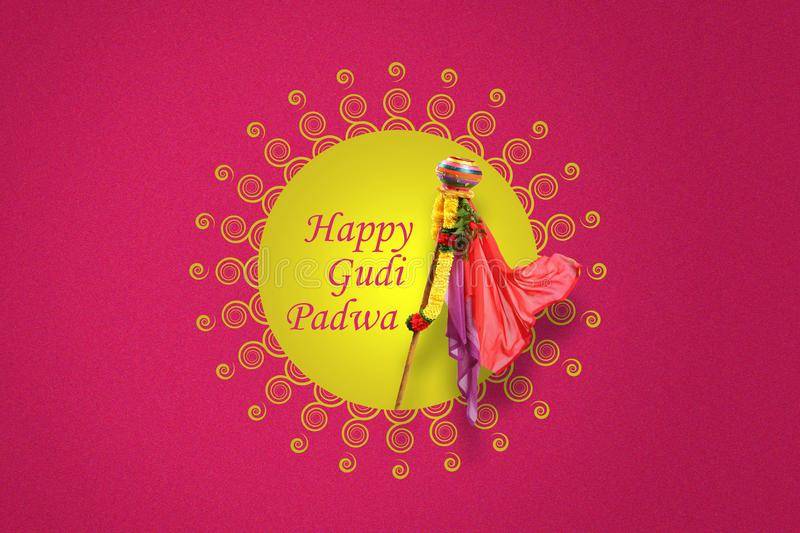

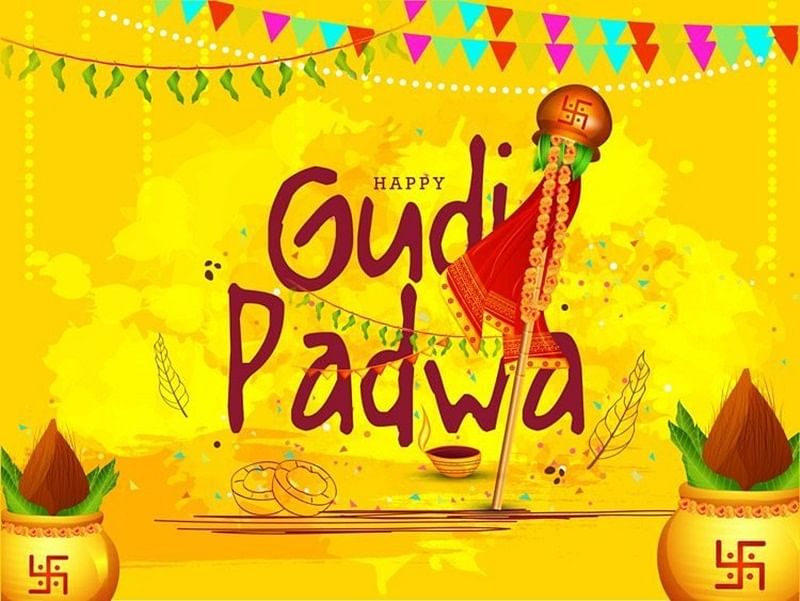
![Гуди падвасодержание а также этимология [ править ]](https://travelsoul.ru/wp-content/uploads/d/f/d/dfd6f5101d3dcd77d9adf96ab849a46b.png)
